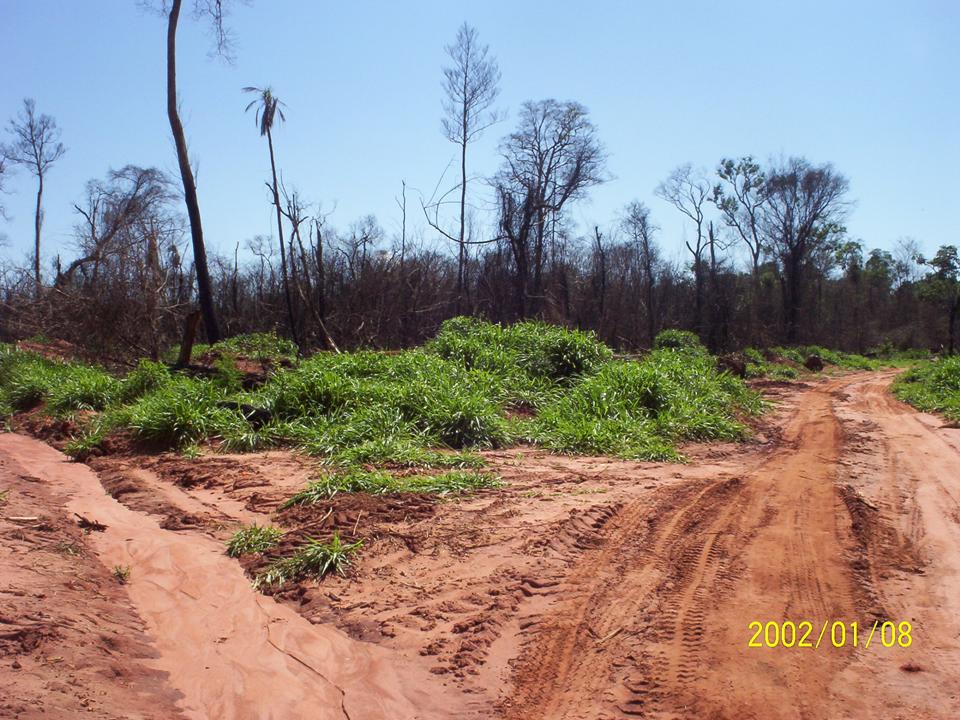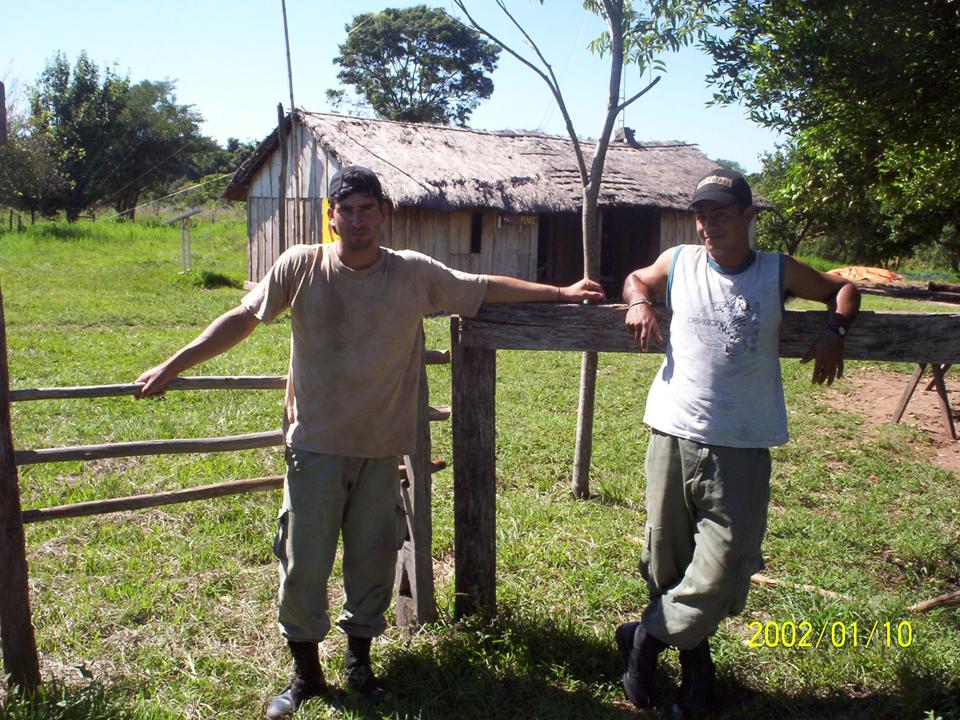

SAN RAFAEL ARTICLE
When it comes to conservation, the Paraguayan government has a major problem - how does it effectively conserve the country´s natural habitats when over 96% of its territory is in private hands? This conundrum was brought to the forefront in 1992 with the declaration of an “Area Designated for San Rafael National Park”. As Paraguay´s second largest block of humid Atlantic Forest (a habitat of “critical conservation importance” according to Conservation International) and a major centre of biodiversity in the Southern Cone of South America, its value is unquestionable, but can you really conserve something if you don´t actually own it?

Fig 1: Burnt forest near to the boundary of San Rafael National Park
The conflict between landowners and conservationists is an obvious one - landowners want to use their land to make money, conservationists would prefer it was left untouched or at least sustainably managed - throw into the mix the chronic institutional instability of central government (which has seen 6 different ministers since the creation of the Ministry of the Environment in 2001!) and things quickly descend into chaos.
Since the declaration of the reserve, it has changed its name more times than Prince, becoming a “Managed Resources Reserve” in 2002 (when it finally became clear that declaring private lands a National Park was a conflict in terms!) and recently reverting back to an “Area Designated for a National Park” - under slightly different legal wording, though still with no guarantee that properties will be purchased or landowners compensated. Similarly it seems that the government cannot even decide on the size of the park, periodically redrawing of the boundaries - the recommended 90,000ha (1990) being trimmed to an initial 78,000ha (1992) for the declaration of the park, then further decreased to 65,800ha (1997), then increased again to 73,000ha (2000) and currently standing somewhere in the region of 74,848ha (2006). With little effort to enforce environmental law in the area (in fact it is hardly enforced at all!) the constant bureaucratic to-ing and fro-ing has done nothing to change the reality of the situation on the ground.
The government´s failure to adequately address the concerns of either conservationists or landowners has made the situation increasingly tense. Indeed the decision by the government bank, the Banco del Fomento, to illegally sell a 4000ha property within the park (“Santa Inés”) to a cattle rancher rather than using it as the nucleus around which to build a National Park raised many eyebrows, especially as conservationists had secured the finances for its purchase. With so much privately-owned land and a rapidly growing rural population Paraguay is in the midst of a “land crisis”. In the wake of increased illegal settlement of estates by landless peasants (campesinos) influential landowners have insisted that the government act to protect their interests. Lacking a long-term plan, the government has frequently opted for the “quick-fix” of settling campesinos in protected areas. A typical example being the 1997 decision by Carlos Wasmosy´s government to settle 78 campesino families on 1300ha of land within the San Rafael reserve. The land was marshy, prone to flooding and useless for agriculture, meaning that the only source of income available to the families was through logging, hunting and other illegal activities.
Frustrated at the lack of progress, concerned NGOs including Guyra Paraguay, PROCOSARA, IDEA and the Natural Land Trust formed the Alliance for the Conservation of San Rafael in 1999 with the aim of trying to move things forward. Birdlife International partner Guyra Paraguay had declared San Rafael to be Paraguay´s first IBA (Important Bird Area) in 1997 reflecting its value, and with the help of private donors the Alliance, under the leadership of Guyra Paraguay, began to actively purchase properties within the reserve.

The establishment of a small group of park rangers by PROCOSARA enabled the reserve boundaries to be patrolled - though they rely on the goodwill of conservation-minded landowners for access to their properties. Patrolling day and night, they have the legal right to seize loggers and machinery, but once lawbreakers are handed over to the authorities it is an uphill struggle to get them to prosecute.
The purchase of further land in the reserve has been made increasingly difficult by landowners pressurizing neighbours to drive up land prices within the reserve, paranoid that an increase in “conserved properties” will increase the likelihood that the national park will become a reality. In the meantime the government, at least publicly, states that it remains committed to the National Park whilst simultaneously admitting that the
Fig 2: PROCOSARA Park guards at the Guyra Paraguay property Estancia Kanguery within the reserve boundary
funds with which to set it up are not available. To conservationists this sounds like a hollow promise, while to landowners it increases the fear of the expropriation of their lands and augments their hostility to the park.
With the government apparently lacking a clear strategy on how to proceed, the future of one of Paraguay´s most precious natural treasures hangs uneasily in the balance.
This article was published in Winging It Vol18:5, p10 in September/October 2006 with the title "The Situation at San Rafael".
Thanks to Winging It editor Rick Wright for continuing to support the Mini-Guide project by allowing us to publish our article.
Designed by Paul Smith 2006. This website is copyrighted by law.
Material contained herewith may not be used without the prior written permission of FAUNA Paraguay.
Photographs on this web-site were taken by Paul Smith, Hemme Batjes, Regis Nossent,
Alberto Esquivel, Arne Lesterhuis, Rebecca Zarza and Hugo del Castillo and are used with their permission.



